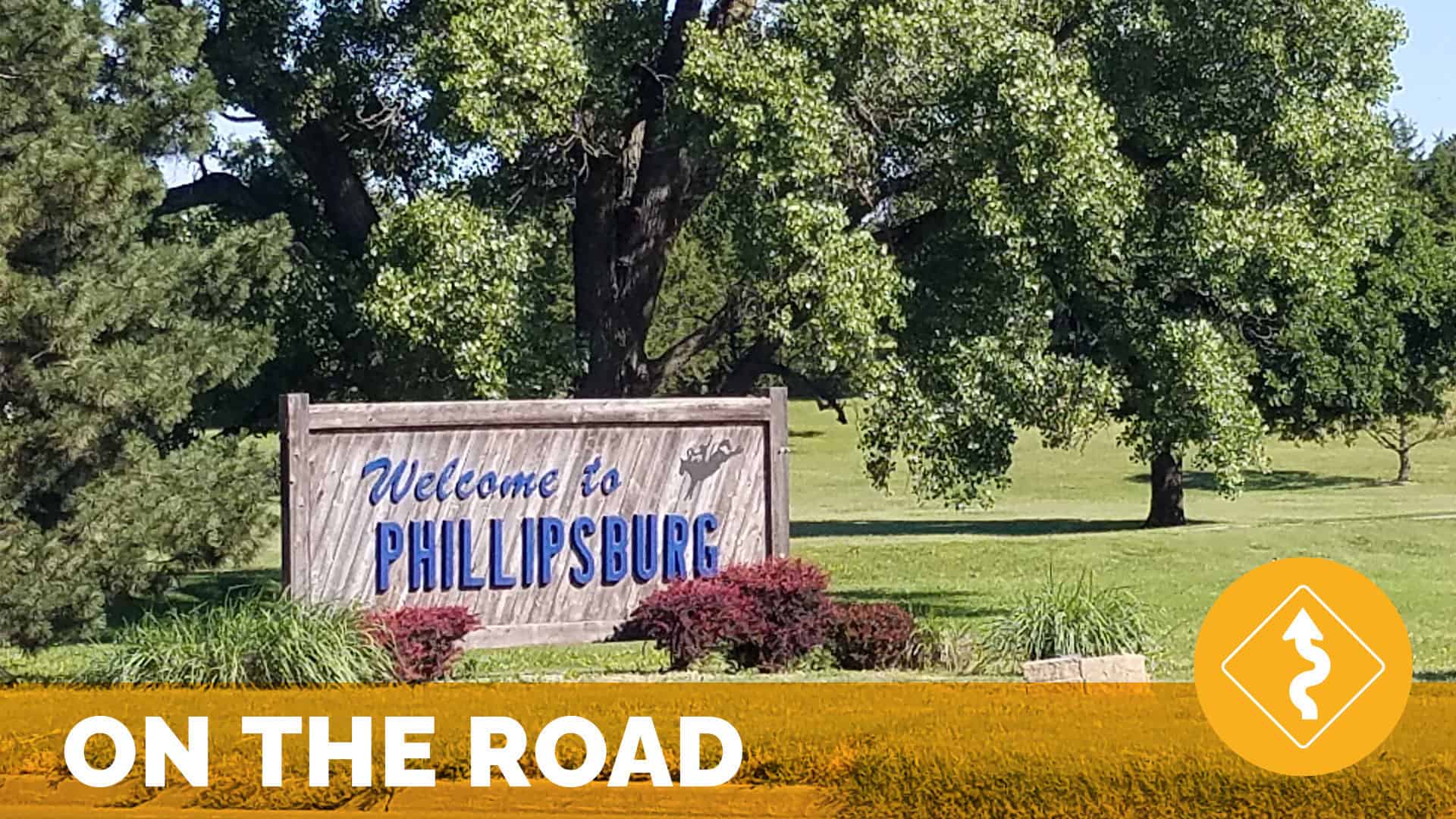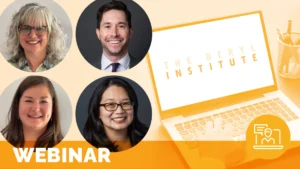Rebuilding Trust to Ensure Sustainability: One CAH’s Remarkable Transformation

On the Road with Phillips County Health Systems – August 2019
by Tiffany Christensen, CPXP
When The Beryl Institute Team goes On the Road, some trips include more “road” than others. Getting to Phillipsburg, Kansas required 3 planes, a rental car and a long drive through miles of farm country. Getting the opportunity to learn from this critical access hospital (CAH), and the community supporting it, was well worth the travel time.
Phillipsburg, Kansas, has a population of approximately 2,500 people and is an agricultural community proud of its wildlife center, Arts Center with a 500-seat auditorium and host to visiting rodeo and hunter enthusiasts. Phillips County, has been through many changes over the years, many of which influenced by companies such as Tamko Industries, Kyle Railroad and Brooke Corporation coming and going from this community; at times causing a 50% drop in the county’s population. As a result of this history, the people of Phillipsburg describe themselves as resilient and feel pride in how hard they have worked to survive and thrive in the changing economic landscape. This is the kind of town where roots run so deep, people can’t imagine living or raising a family anywhere else.
Serving this growing, friendly and resilient community is Phillips County Health Systems (PCHS), a critical access hospital located in the middle of town. Critical access hospital designations were created in 1997 as a part of a government effort to keep essential medical services in rural communities. Nearly all CAHs provide emergency care and have 25 in-patient beds with an average daily census that is often lower than full capacity. The specialties offered (surgery, labor and delivery, rehab, for example) vary by individual CAH. Phillips County Health Systems has 134 employees and offers general surgery, an on-site cardiac rehab, a physical therapy gym and out-patient clinics.
During my time at Phillips County Health Systems, I had the honor of sitting down with most of the systems department heads, the CEO, the CNO, the CXO and a variety of community members. Each of them shared a version of the same story: an organization that, only 3 years ago, suffered from a fractured relationship with the community that has now seen an extraordinary repair to that relationship and, by extension, an improved patient family experience through consistent and patient-centered change. In fact, the Beryl Institute’s definition of patient experience was displayed just inside the front doors.
At the helm of this change is the leadership team who built the foundation for improvement using tactics known to shift the culture and improve the experience. This organization chose to ask the hard questions from those receiving and delivering care and based on the insights gained, addressed issues that kept community members from walking through their door for care.
A Community’s Broken Trust
“We should be able to pull off this ‘patient experience thing’ more than a big hospital. We are raising our game for when a patient walks in our door.” Rex Walk, CEO.
While consistent standards across all healthcare settings is key to safety, quality and experience, it must be acknowledged that there are some authentic differences between a critical access hospital and larger hospitals or those in urban settings. Unique to critical access hospitals is the relationship between the organization and the community. Unlike larger healthcare facilities, CAHs rely on people within the county and nearby counties to choose the CAH as their healthcare provider as well as endorse it to other members of the community. If the community does not support the CAH, this could be a serious concern for the future of the organization; both because of lack of patients and support for local legislation determining funding for the organization. Trust and good rapport between a CAH and its community is essential to keeping the doors open. Like many critical access hospitals, Phillips County Health Systems faced a breakdown in trust that threatened its viability.
It was only 3 years ago that the trust between this community and Phillips County Health Systems was at an all-time low. As an example, there was a group of community members at that time that called themselves the “Concerned Citizens of Phillips County.” Members of this group attended and filmed board meetings in order to analyze and critique the meeting like one might do a football game. Thanks to hard work and dedication from Phillips County Health Systems leaders and staff, these are people who now serve on the PFAC and have become the organizations’ greatest champions within the community. This On the Road seeks to explore how this organization was able to make such a profound change in such a short amount of time.
Understanding why the community felt such deep dissatisfaction from its local healthcare system was the first step in being able to repair the broken trust. At the root, it was discovered the following primary areas of concern:
Provider and staff turnover created a belief that “providers must be leaving for a reason” which made people skeptical about the health of the organization’s culture.
Inconsistency in staffing created the belief “They don’t know what they are doing.” The belief was so pervasive among the community that even the organization’s CNO could not convince her parents to choose Phillips County Health Systems.
The hospital’s integrity was a topic of conversation in the local newspaper and local coffee shops. Concerns included were how the hospital is run, how board members were chosen and a general perception that “nothing was getting done” to improve the care provided.
Rebuilding Trust with Hard Work and PX Fundamentals
“This is our community, our friends and our families.” Vickie Gibbs, CNO.
In talking with all of the staff, leaders, clinicians and community members during this On the Road, two things stuck out. 1) They all told a consistent story of how this organization lost and repaired trust. 2) The ways in which trust was rebuilt had nothing to do with marketing spin; the methods to rebuild trust were all based in working hard at improving the fundamentals of improving patient experience.
The list of strategies Phillips County Health Systems has employed to improve experience is far too long to include in this article. Below is a broad overview with some of the ways they approached this monumental effort, starting with the internal team members and ending with true community partnership.
Staff and Clinician Engagement
Before asking staff and clinicians to approach communication with patients differently, leadership recognized that the communication between team members was sometimes unhealthy and needed attention. As an Example, CNO, Vickie Gibbs, set out to make her nursing staff to be cohesive by setting an expectation and providing skills training to ensure that nurses were having critical conversations with each other before going to the CNO with complaints about personal interactions. Today, Vickie notes the clinical staff is happier because of this new habit for resolving conflict.
A Welcoming Environment
We all know that “you never get a second chance to make a first impression.” Before this transformation, community members reported they would be ignored when passing by the Nurses’ Station. Now, after “customer service training” patients and families are consistently greeted at the Nurses’ Station and walked wherever they are going; making the community feel cared for at their first point of interaction within PCHS.
Patient and Family Engagement
Based on some of the feedback from the community, leaders discovered some patients were frustrated by some of the expectations that were set and not met. Upon investigation, it became evident that many of these concerns had relatively easy solutions. Leadership worked with staff to think about what they say and how that might be heard from a patient’s perspective. When a staff member or clinician says “I’ll be right back” they are asked to think “Is that true? Will I be right back?” If they can’t be sure they will be able to come right back, they change the expectation simply by changing their wording to something like “I’ll be back as soon as I can.” Along with careful consideration to wording, they brought in the complimentary strategy “Commit to Sit” which asks staff and providers to sit when communicating with patients to increase patient perceptions of being well-cared for, listened to and given the proper amount of attention.
Sensitivity to the Community’s Needs Beyond Hospital/Clinic Walls
Working in a small community means the needs of your patients are the needs of your friends, family and neighbors. This close-knit reality lends itself to an environment where barriers to good care are well-known and staff will go the extra mile. Those serving this community feel this type of effort is how they “show them we really care.” According to Jennifer Dodds, CXO, “We want it to be every patient, every time.”
Listening and Taking Action
Laboratory saw patients struggling to get in the door so applied for grant and got an automatic door. Now, the area is widened creating easier access for those using wheelchairs or other assistive devices.
Genuine Partnership with the Community
“It’s a gamble every time you decide to plant something”
Christiane ‘Criquet’ Cole, Community Board Member
Phillips County Health Systems can be seen as a role model for many things. At the top of that list is their evolution in establishing a genuine partnership with their community. Years ago, this partnership began because the organization decided they were ready to take an honest look at what went well and what was not going well. The first step was a community-wide survey that helped identify the biggest reasons for those choosing to seek healthcare outside of their community. This first step led to changes that were based on the community’s suggestions. Further building on this was a formalized Patient and Family Advisory Council and putting passionate community members on the board.
Over time, good will was built with fun new public programs like “Breakfast with Santa” and more providers were brought in to care for patients; increasing clinicians from two to seven. As the PFAC and Board Members became more involved in understanding the way Phillips County Health Systems functioned and how they worked to improve, they became advocates for PCHS, speaking out in the coffee shops and legislative debates in support of the organization’s willingness to change and an increased confidence in their integrity.
Perhaps the greatest mark of an organization having a genuine partnership with its community are the programs that were initiated by those in the community itself. A poignant example of this is the community member who recognized the need to support local farmers as the suicide rate continues to rise in this population.
“Farm operators and farmworkers are significantly understudied in the area of violent workplace fatalities, but studies consistently show that farmers are at increased risk for violent death, and in particular for suicide. In 2013, the Bureau of Labor Statistics (BLS) reported over a 3‐fold risk of suicide for the agricultural, forestry, and fishing industries (AFF), the category that includes farmers and agriculture workers, compared with the general working population”
Trends and Characteristics of Occupational Suicide and Homicide in Farmers and Agriculture Workers, 1992–2010
First published: 02 May 2017 https://doi.org/10.1111/jrh.12245
This community member’s concern was met with a partnership with PCHS. Today, farmers in the community are invited to regular sessions hosted at PCHS with integrated behavioral health specialists and clinicians. During these sessions, farmers are given the chance to receive:
Skin checks because they often work long hours in the sun with no sunscreen
Education about the signs and symptoms of stroke
Emotional support in a group of their peers, facilitated by a professional
While the program is relatively new, it is already proving to be well-received and gives local farmers support proactively rather than forcing them to get an appointment (which is a step they are unlikely to take). This is a spectacular example of how a health system can learn from its community about what matters most and, as a result, create a program with tremendous value that touches the lives of everyone.
Lessons for Us All
Phillips County Health Systems was named 2017 Top 20 CAH in the country, is on solid financial ground and has built a solid culture that cares about who they serve and who they work beside every day. As evidence, this organization has seen a marked improvement in patient experience scores and is seeing 60-70 charts transferred every month. On a personal note, CNO Vickie Gibbs is happy to report her parents have transferred their care back to PCHS and she says this is proof that hard work has paid off.
The organizational story found in this On the Road certainly include elements unique to a critical access hospital. When you boil it down, however, the strategies used to make this impressive turn-around can be applied to any healthcare facility in any community of any size. This organization exemplifies what can happen when a commitment is made to learning from community members, boldly stating a desire to build trust and confidence in the organizations’ ability to provide excellent care and addressing concerns head-on using well-established and well-executed PX improvement strategies. We are grateful we had the chance to explore this inspiring critical access hospital’s journey from concern to commitment to community engagement.
Related content
-
 Culture & Leadership | Infrastructure & Governance | Staff & Provider Engagement
Culture & Leadership | Infrastructure & Governance | Staff & Provider EngagementOwnership at the Frontline: Innovating an Experience Champions Program
Many patient experience teams are small, and it’s hard to do it all. Having an “Experience Champs” program allows us to have multiple hands with one voice influencing all locations. Experience Champs are made up of frontline staff members who are chosen by their leaders as passionate role models. During the last five years, the
Learn more -
 Infrastructure & Governance
Infrastructure & GovernanceService Recovery for All: The In-Patient Setting
Those working in healthcare have been experiencing the challenges associated with incivility of patients and family members. The workforce needs tools to effectively and confidently have conversations with upset individuals.
Learn more -
 Infrastructure & Governance
Infrastructure & GovernanceThe State of Patient Experience 2021: Reflecting on Realities as we Transform the Human Experience in Healthcare
Hear global insights and evidence on where the experience movement is headed, where it is challenged, how its focus is evolving and what new frontiers it is exploring.
Learn more
